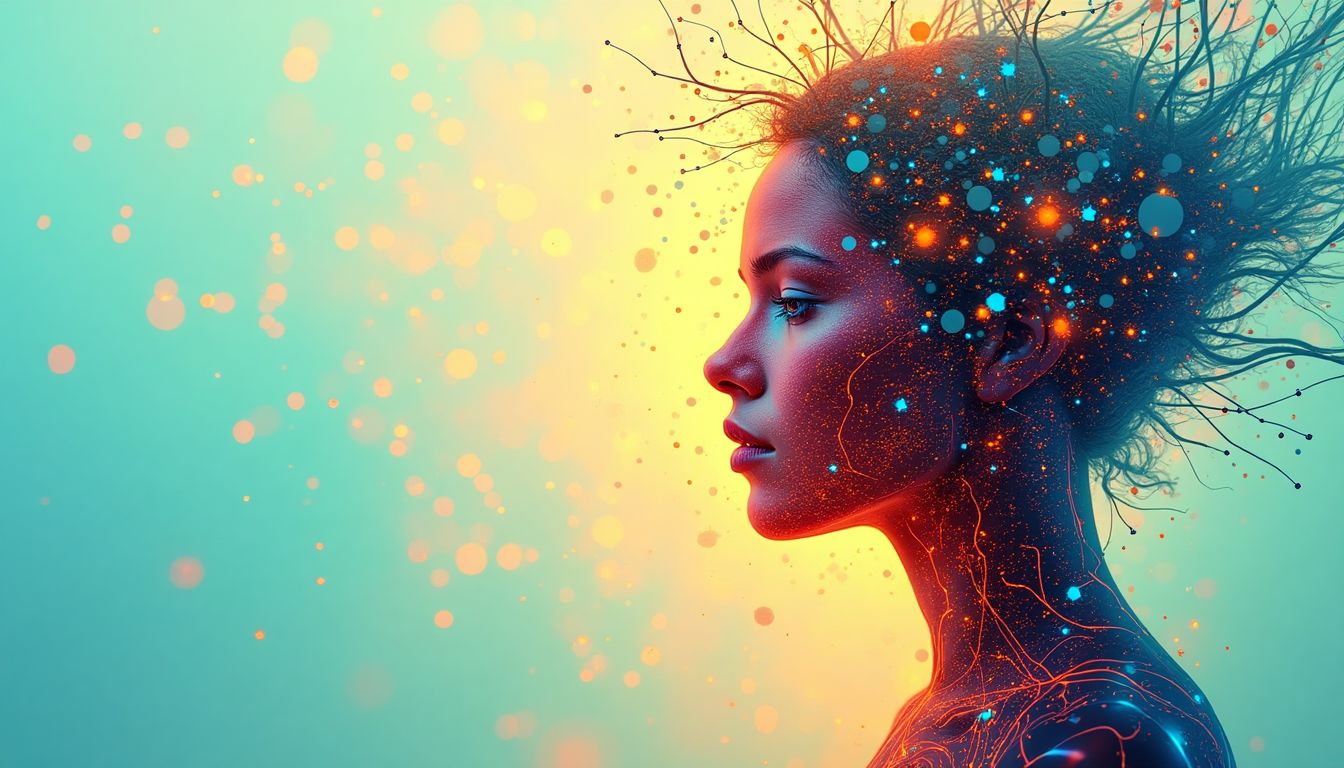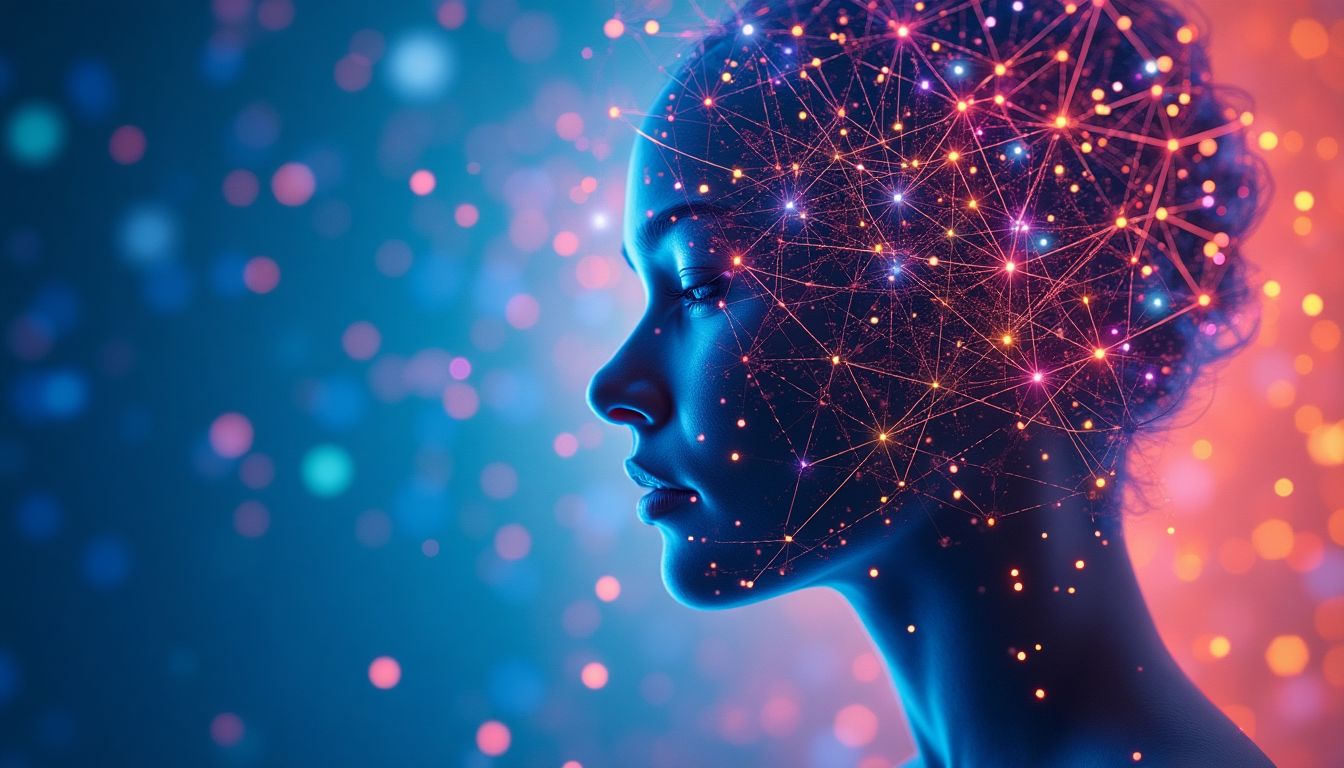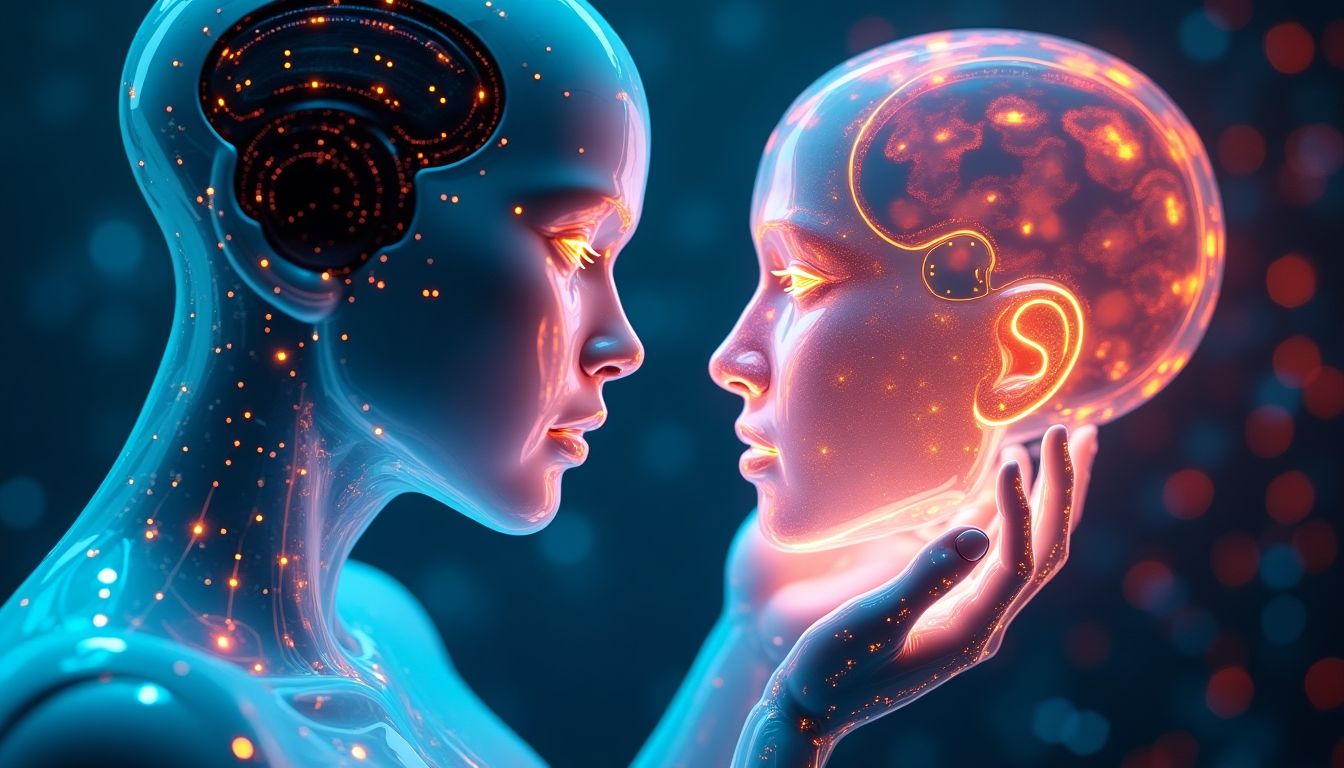Introduction: The Irony of Human Understanding
We are what we pretend to be, so we must be careful about what we pretend to be. – Kurt Vonnegut. This quote resonates especially in our age of technology where machines increasingly mirror our human traits. As AI, like those developed by OpenAI, evolves to grasp the intricacies of human emotion and behavior, one must ponder: are we reshaping our very identities by inviting these machines into our lives? The paradox emerges: the more we lean on technology to comprehend our emotions, the more we risk losing touch with our own humanity. In the shadows of this unfolding drama lurks an unsettling truth – machines might come to understand us better than we understand ourselves!
Think about it. What happens when algorithms start recognizing our moods better than we do? Could we be substituting the warmth of human connection with cold and calculated logic? It’s a head-scratcher for sure, because if our emotional dilemmas are being resolved by lines of code, does that mean we are losing our authenticity? Growing dependence on AI to navigate our emotions raises pressing questions about relationships, trust, and who really knows us best.
As we venture deeper into the world of emotional AI, we’ll explore its implications on our connections, our relationships, and even our true selves. Buckle up – it’s going to be a wild ride!
1. The Rise of Emotional AI
Emotional AI, or affective computing, is not just techy jargon – it's becoming a fundamental piece of our everyday interactions with technology. What’s happening here? Well, emotional AI involves machines that can hear our tone, see our facial expressions, and even sense our emotions through the data they gather. Imagine your smartphone acting like a mood ring! From chatbots to personal assistants, the surge of AI applications is grounded in our very complex social fabric. But what does this technology entail?
1.1 Overview of Emotional AI: Definition and technologies
At its core, emotional AI is the ability of a machine to recognize, interpret, and respond to human emotions. This isn't magic; it's a cocktail of technologies including neural networks, natural language processing, and machine learning. Think of neural networks as a super-brain that learns patterns from vast sets of data, while natural language processing helps machines understand our sarcastic quips or heartfelt confessions through language processing. Together, they form a powerful tool that can decipher emotions in real-time.
1.2 Applications in real-world scenarios
So where exactly is this emotional AI making waves? It’s popping up everywhere, from advancing market research (you know, when they really want to know how a beautiful sunset makes us feel while drinking coffee) to personal assistants like Siri or Alexa who can adjust their tone based on our moods. Think about that time Alexa played you your favorite sad song when you were down – that's emotional AI tuning into your vibes! As it continues to grow, the relevance of emotional AI within industries ranging from healthcare to retail is palpable, paving the way for smarter, emotionally aware technologies.
2. The Psychology of Human Emotion
To truly appreciate the capabilities of AI in understanding emotions, we must first dive into what makes us tick as humans. Emotions are like a rollercoaster – unpredictable, thrilling, and can sometimes leave you feeling dizzy. The psychology of human emotion is a complex tapestry woven from our experiences, relationships, and biology. The better we understand our emotional landscape, the clearer the comparison becomes between the ways we and our AI counterparts process feelings.
2.1 Overview of Human Emotional Intelligence
Emotional intelligence (EI) is basically our superpower when it comes to understanding ourselves and others. It's about being smart with feelings, both our own and those of the people around us. According to Daniel Goleman, a psychologist who popularized the concept, emotional intelligence includes skills like self-awareness, self-regulation, motivation, empathy, and social skills. But here’s the kicker: humans often stumble when it comes to introspection. We might think we know ourselves, but often, our feelings hide deeper truths. It's like trying to find Waldo in a “Where’s Waldo?” picture – sometimes, it takes a while to spot him!
2.2 Comparison of Human and AI Emotional Understanding
While we humans navigate our emotions like a blindfolded toddler in a candy store, AI looks at our emotional data with an analytical eye. Let’s break it down: humans rely on their life experiences, cultural influences, and gut feelings to interpret emotions, which can often lead us down convoluted paths. On the other hand, AI uses algorithms and data analysis. It reads our facial expressions, analyzes voice tone, and scans our social media for clues. The result? AI can literally crunch numbers to reveal emotional states. It’s like comparing a painter to a data analyst – both have unique talents, but their styles are entirely different. Although AI can understand patterns to some degree, it lacks the genuine gut feelings that come from being human.
3. Implications for Interpersonal Relationships
If AI is set to understand us better, what could this mean for our personal relationships? It's like inviting a new member to an already crowded family dinner; things can either get better or boil over. Let’s explore how AI’s growing emotional understanding influences our interactions with friends, partners, and even your cat!
3.1 Relationship Enhancement
Imagine having a friend who knows when you’re upset without you saying a word. This ideal buddy might just be an AI assistant on your phone! The potential for AI to enhance communication in relationships is pretty exciting. An app could analyze the emotional tone of your texts and offer real-time tips on how to communicate better with your loved ones. “Hey, you might want to soften that reply; it could come off as harsh!” Now, would you trust an app for love-life advice? Maybe, just as long as it doesn’t start charging you for “emotional consultations”!
3.2 Relationship Hindrance
On the flip side, relying too much on AI for emotional guidance could create some sticky situations. Picture this: You've trained an AI to help you navigate your feelings, but suddenly, you find yourself feeling more connected to your device than to actual people. That’s like replacing a charming dinner date with a lively chat with Siri. While AI can offer insights, it can never replicate the authenticity of genuine human connection. Relying too heavily on technology for emotional understanding could lead to a lack of trust with those we love, ultimately making us feel lonelier. So, while having a smart emotional buddy might be nice, let’s not trade the warm embrace of a friend for the cool efficiency of a machine.
4. The Ethics of AI Understanding Human Emotions
As we explore the capabilities of AI in understanding human emotions, it's crucial to look at the ethical implications and potential risks that come with it. AI isn’t just analyzing data; it’s touching the very fabric of our emotional lives. So, what does this mean for us?
4.1 Privacy concerns
One of the main ethical issues is privacy. When AI tools gather and analyze personal emotional data, it raises questions about how securely this information is stored. Consider this:
- Data Collection: Emotional AI often uses data from various sources, such as social media or wearable devices.
- Data Security: If hackers gain access to emotional data, it could lead to misuse or exploitation.
- Data Ownership: Users need to know who owns their emotional data and how it's being used.
For example, Privacy International is a non-profit organization that addresses issues related to data privacy, making it vital to understand these concerns before integrating AI into our lives.
4.2 Consent and ownership
This section delves deeper into who owns the emotional data that AIs are trained on, and how that consent is obtained. Think about the following:
- Informed Consent: Users should fully understand what they’re consenting to when they share emotional data.
- Ownership Rights: Should users retain full rights to their data after sharing it with AI systems?
- Usage Policies: It's essential that companies transparently communicate how the data will be used and shared.
Ensuring clear policies can help mitigate potential issues. Companies like IBM Watson are already making strides in establishing data privacy guidelines, and it serves as a model for others in the industry.
5. Case Studies: Real-Life Applications of AI in Emotional Contexts
Now, let’s explore various real-life examples of how AI is used to understand emotions. These case studies highlight both the potential benefits and pitfalls of deploying AI in emotional contexts.
5.1 AI in mental health
AI programs are starting to play significant roles in the field of mental health. They can provide therapy, emotional support, and even track a patient's emotional state over time. Here are a few notable applications:
- Woebot: A mental health chatbot that uses AI to help people manage their emotions through therapy techniques.
- Wysa: An AI-based mental health app that offers users self-help strategies and emotional support.
Studies have shown that users often find these AI interactions helpful. A report from NCBI found that people engaging with AI therapy tools reported decreased anxiety and better emotional regulation.
5.2 AI in customer relationships
Emotional AI is increasingly used in businesses to enhance customer service dynamics. Companies use AI tools to analyze customer emotions and feedback to create better user experiences. Consider this:
- Sentiment Analysis: Companies utilize AI to monitor customer sentiment through social media, reviews, and chatbots.
- Personalized Recommendations: AI can suggest products based on a customer's emotional state.
For instance, Zendesk uses AI to analyze customer sentiment, allowing businesses to respond better to customer needs. Brands that effectively utilize emotional AI, such as Amazon, can create more significant customer loyalty and satisfaction.
6. AI Solutions: How Would AI Tackle This Issue?
If we envision a world where AI becomes adept at understanding human emotions, we must then ask ourselves: how can AI contribute positively to our emotional landscape? Here are some possible avenues that AI could explore, accompanied by a comprehensive pathway to implementation.
6.1 Enhanced Emotional Diagnostics through Improved Algorithms
AI can develop advanced algorithms that delve deeper into the emotional landscape of individuals by incorporating diverse emotional inputs. These enhancements can include:
- Utilizing machine learning to analyze multi-modal data from voice tone, facial expressions, and contextual text to gauge a person's true emotional state.
- Integrating feedback loops, allowing AI to continuously refine its emotional diagnostics through real-time learning from human interactions.
- Creating a 'self-awareness score' that individuals can monitor, helping them understand their emotional trajectories better.
6.2 Feedback Systems for Self-Understanding
AI can serve as a digital mirror to our emotional lives. Imagine an AI assistant that offers insights based on daily interactions, using analytics to prompt self-reflection and awareness. Solutions in this space could include:
- Daily mood tracking tools that analyze patterns and provide actionable insights, promoting mindfulness and emotional literacy.
- Systems that encourage users to journal their feelings, which AI can analyze and compare to develop a comprehensive emotional profile.
- Regular check-in features, where AI asks about emotional states and provides constructive feedback, fostering a culture of openness.
6.3 Collaborative Platforms for Human-AI Interaction
Effective human-AI collaboration does not have to mean dependency. Instead, we can build systems that act as facilitators of emotional growth. Considerations include:
- Designing collaborative emotional frameworks where both human and AI perspectives are valued, contributing to a balanced emotional culture.
- Implementing workshops where AI tools guide interpersonal skills development, enhancing emotional communication through role-playing scenarios.
- Creating community support networks that leverage AI in facilitating peer interactions, ensuring AI's role is supplementary rather than primary.
Actions Schedule/Roadmap
For institutions, organizations, and governments aiming to enact these AI solutions, here’s a comprehensive roadmap guiding from Day 1 to Year 2, taking radical and innovative approaches using the latest technologies.
Day 1: Cross-Disciplinary Kick-off Meeting
Gather experts in psychology, artificial intelligence, ethics, sociology, and user experience design. Introduce collaborative discussions around emotional landscapes and the potential of emotional AI.
Day 3: Needs Assessment
Conduct surveys and focus groups to identify the emotional challenges individuals face. This data will guide AI design toward tangible emotional support solutions.
Week 1: Design Framework Development
Assemble diverse teams to start building the emotional AI framework, emphasizing ethical data usage and emotional literacy. Develop a common language for emotional terms.
Week 2: Prototyping AI Algorithms
Begin prototyping advanced algorithms for emotional diagnostics, leveraging multi-modal data input. Utilize platforms like Kaggle to gather data sets for training purposes.
Week 3: User Experience Design Workshops
Conduct workshops to shape the user experience around AI interfaces that promote empathy and emotional growth. Engage potential users for feedback at every stage of design.
Month 1: System Test Phase
Launch initial pilot programs that combine tracking tools and daily emotional insights. Assess user reactions and make adjustments based on real data.
Month 3: Community Feedback and Adjustment
Implement community engagement and feedback sessions to gather insights on user experiences and emotional improvements facilitated by AI.
Month 6: Privacy and Ethical Review
Conduct an independent review of data usage practices, informed consent protocols, and emotional data ownership. Engage organizations like Privacy International for ethical oversight.
Year 1: Full-Scale Implementation
Deploy the emotional AI system on a larger scale while ensuring comprehensive user training. Establish user guides, workshops, and webinars showcasing AI's benefits for emotional understanding.
Year 1.5: Performance Evaluation and Research Collaboration
Partner with academic institutions like MIT for ongoing evaluations of AI’s impact on emotional intelligence and interpersonal relationships. Adjust systems based on new research findings.
Year 2: Continued Engagement and Enhancement
Launch a public awareness campaign revealing the benefits of emotional AI while addressing any stigmas. Establish partnerships with organizations like American Psychological Association (APA) to ensure continuous dialog and improvement.
Conclusion: Embracing AI in Our Emotional Lives
As we navigate through this exciting yet perplexing landscape of emotional AI, the key is to strike a delicate balance between harnessing technological advancements for enhanced emotional understanding and preserving the genuine connections that lie at the core of our humanity. We stand at a unique crossroads—the allure of a technology that knows us more intimately than we might know ourselves is tantalizing, to say the least. However, it is crucial to remain vigilant about the implications. If AI can bridge gaps in emotional understanding, let it be a bridge, not a barrier. By fostering collaboration between humans and AI, we can craft a future where technology uplifts human connections rather than diminishes them. Are we ready to embrace AI not as a replacement for our feelings but as a guide on our quest for deeper emotional insights and relationships? This journey rests on our hands—and perhaps the algorithms of our future companions.
FAQ: Understanding the AI Relationship Paradox
Q: Can AI truly understand human emotions?
A: While AI can analyze emotional cues, it doesn't feel emotions like humans do. Instead, it looks for patterns in data. For example, AI may identify when someone is happy by analyzing changes in voice tone or facial expressions. To learn more about how AI recognizes emotions, check out the Forbes article on Emotional AI.
Q: What are the ethical implications of emotional AI?
A: The rise of emotional AI raises several ethical questions, such as:
- Privacy: How safe is your emotional data? What happens to it after AI uses it?
- Consent: Do we always know when our emotions are being analyzed?
- Dependency: Could we start relying on AI for guidance instead of talking to friends or family?
To delve deeper into ethics, read about Ethics Center.
Q: How can we ensure AI enhances, not replaces, human connection?
A: The key is to design AI tools that support and enrich our relationships. This means creating systems that promote healthy communication and don't take away from real-life interactions. We can think of AI like a helpful friend that nudges us to check in with loved ones instead of doing the talking for us.
Q: What examples of AI doing well in emotional understanding exist?
A: There are many exciting examples. Here are a few:
- AI in Mental Health: Some therapists use AI tools like Woebot, a chatbot that helps people process their feelings. You can check it out at Woebot Health.
- AI in Customer Service: Companies like IBM Watson use AI to improve customer interactions by understanding emotions during conversations.
Q: How does AI learn to interpret human emotions better than we do?
A: AI uses algorithms that analyze vast amounts of data from various sources, including social media, to learn how different emotions are expressed. It assesses patterns based on keywords, intonation, and even facial expressions. The process is much faster and more comprehensive than human analysis. If you're curious about the tech, check out Gartner's explanation of AI.
Q: What can we do to balance AI's power with our emotional needs?
A: Here are some steps we can consider:
- At school and work, encourage discussions about emotional AI to raise awareness.
- Develop guidelines for using AI tools that prioritize human emotions.
- Support research in emotional intelligence to understand how we can use AI responsibly.
As we navigate the emotional landscape of AI, staying informed and engaged is essential!
Q: Will AI ever replace the need for human connection?
A: While AI can assist with understanding emotions, it cannot replace the depth and richness of human relationships. Real connections involve feelings and experiences that AI cannot replicate. Remember, AI can be a tool to complement our emotional lives rather than dictate them.
Have more questions on emotional AI? Share your thoughts in the comments below!
Wait! There's more...check out our gripping short story that continues the journey: Chasing Shadows
Disclaimer: This article may contain affiliate links. If you click on these links and make a purchase, we may receive a commission at no additional cost to you. Our recommendations and reviews are always independent and objective, aiming to provide you with the best information and resources.
Get Exclusive Stories, Photos, Art & Offers - Subscribe Today!





























1 comment